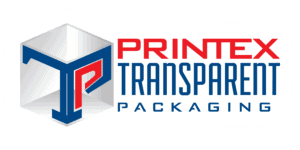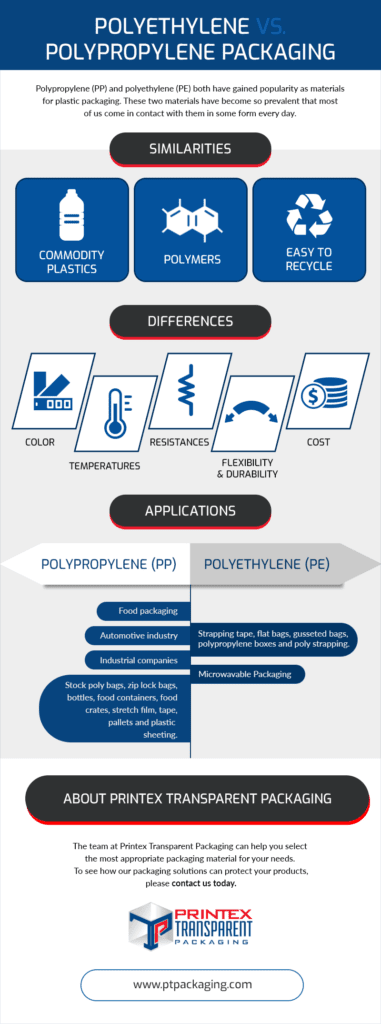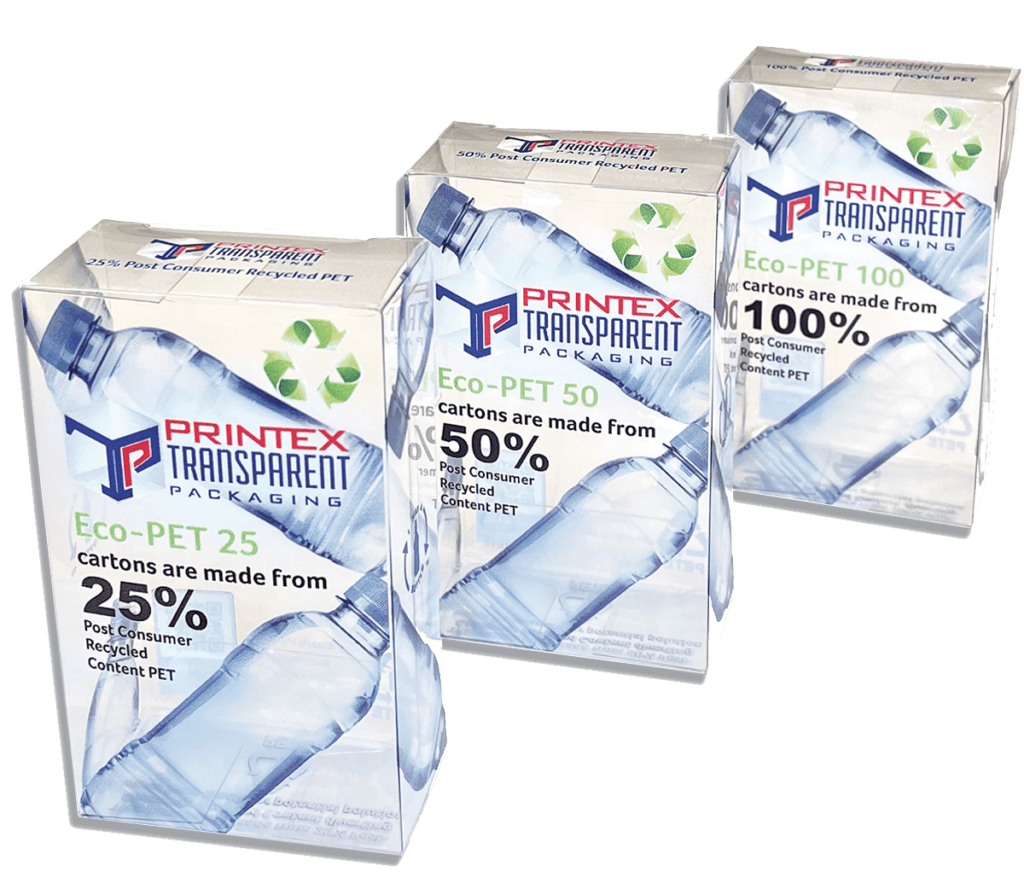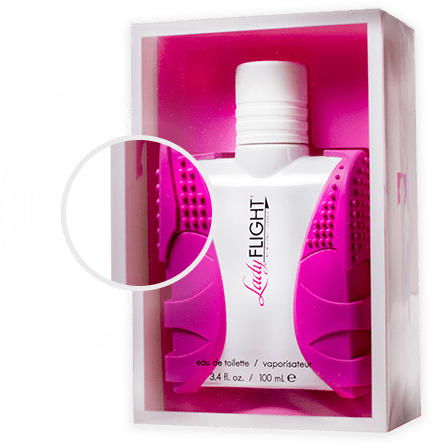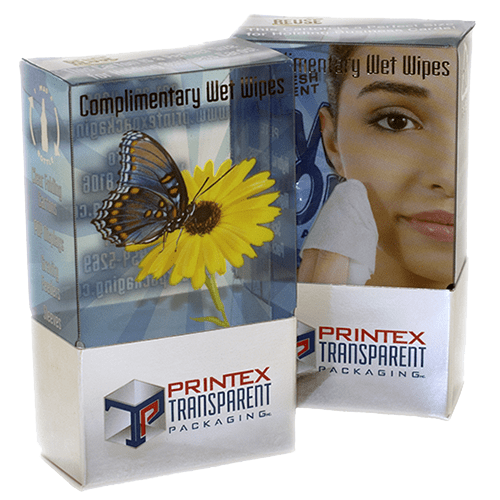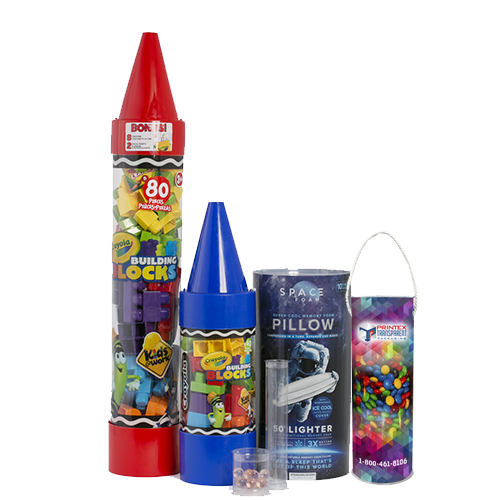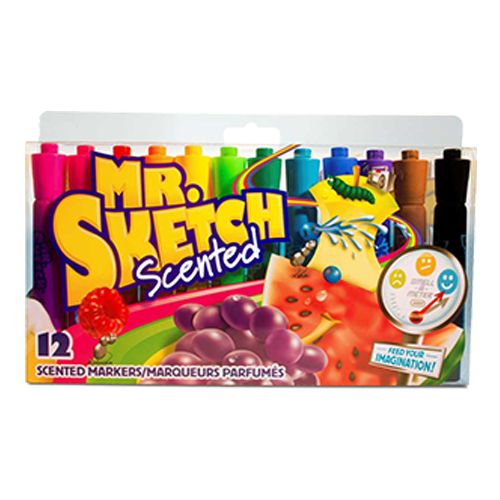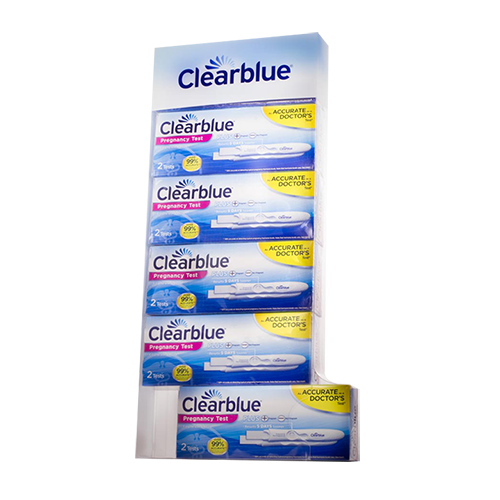Polyethylene vs. Polypropylene Packaging
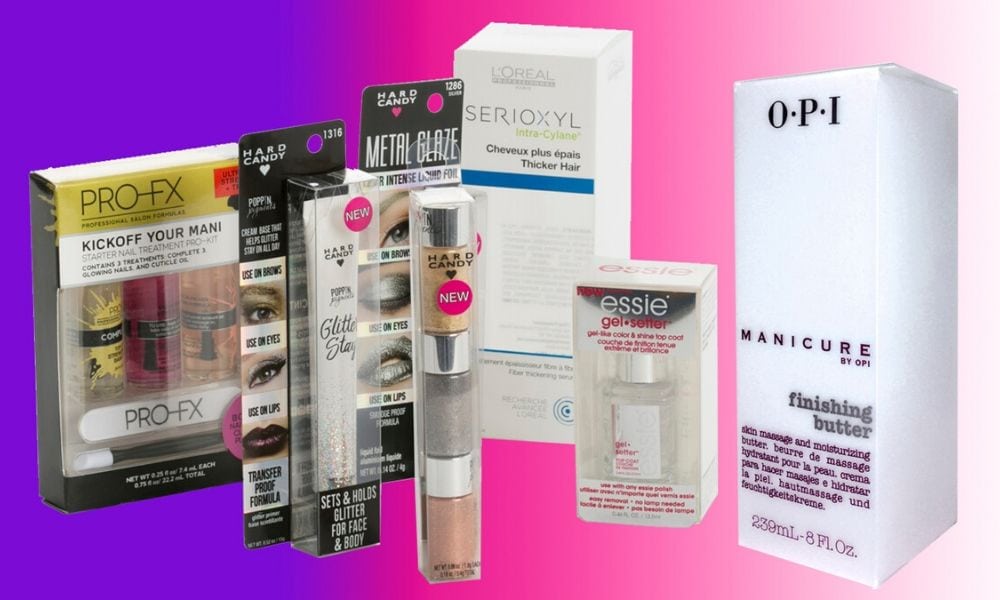 Polypropylene (PP) and polyethylene (PE) both have gained popularity as materials for plastic packaging. These two materials have become so prevalent that most of us come in contact with them in some form every day. To make the right packaging decision, it’s important to understand the properties, differences, and applications of both materials. While polypropylene and polyethylene may appear very similar on the surface, each has certain well-defined characteristics that can help inform decisions regarding polypropylene vs. polyethylene.
Polypropylene (PP) and polyethylene (PE) both have gained popularity as materials for plastic packaging. These two materials have become so prevalent that most of us come in contact with them in some form every day. To make the right packaging decision, it’s important to understand the properties, differences, and applications of both materials. While polypropylene and polyethylene may appear very similar on the surface, each has certain well-defined characteristics that can help inform decisions regarding polypropylene vs. polyethylene.
Polyethylene vs. Polypropylene: Similarities
Both polypropylene and polyethylene fall under a category of plastic materials known as polymers. Both plastics are considered commodity plastics, which means they typically get used in large volumes for a wide range of applications. As thermoplastics, polypropylene and polyethylene food packaging are easy to recycle, since thermoplastics can be easily melted down and reused.
Polyethylene vs Polypropylene: Differences
Despite the aforementioned similarities, polyethylene and polypropylene have a variety of distinct differences.
Color
These two materials have different aesthetic qualities that make them better suited for different products:
- Polyethylene packaging usually appears as milky-opaque, opaque, or translucent depending on the thermal history and film thickness of the material. The color of PE prevents light from reaching the contents of the packaging, which helps to protect products from UV damage.
- Polypropylene packaging features high clarity, making it easy to view the packaged item. Pigments may be added to the plastic to tint the packaging. PP packaging may also be manufactured as translucent without coloring.
Temperatures
Polypropylene can withstand high temperatures up to 170°C, as opposed to polyethylene’s maximum tolerance of 115°C. Conversely, PE features stronger resistance to cold down to -80°C, as opposed to PP’s maximum cold resistance of about 0°C.
Resistances
Polyethylene is durable and flexible, with excellent resistances to fatigue, tearing, and chemical exposure. PE is also an effective electrical insulator and provides good tracking resistance. However, it is easily electrostatically charged, though this property can be offset by adding antistatic agents, carbon black, or graphite.
At room temperature, polypropylene features excellent resistances to almost all organic solvents and fats. PP can withstand non-oxidizing acids and bases and has high resistances to cracking, acids, and electrolytes. PP also features excellent resistance to fatigue.
Flexibility & Durability
Polypropylene is highly flexible, lightweight, and quite durable. The durability of PP allows it to bend repeatedly at the same point without cracking or breaking.
By contrast, polyethylene features better softness and pliability. However, polyethylene is available in low-density and high-density formulations, which makes it quite versatile for a variety of product types.
Cost
Polyethylene is generally less expensive, and low-density polyethylene can offer significant savings for high-volume shipping due to its lower weight. The lightweight nature of polypropylene packaging also contributes to low shipping costs, though the material itself is more expensive.
Polyethylene vs Polypropylene: Applications
Some of the most common uses for polyethylene and polypropylene include:
Polyethylene
- The elasticity of polyethylene makes it an ideal material for food packaging.
- Polyethylene is used extensively in the automotive industry.
- Polyethylene is often used for manufacturing stock poly bags, zip lock bags, bottles, food containers, food crates, stretch film, tape, pallets and plastic sheeting.
- Due to its durability, industrial companies often use polyethylene storage bags for large heavy items.
Polypropylene
- Polypropylene is used usually for strapping tape, flat bags, gusseted bags, polypropylene boxes and poly strapping.
- Due to high temperature resistance, polypropylene is well-suited for microwaveable packaging.
- Non-packaging uses include housewares, toys, carpeting, upholstery and appliances.
About Printex Transparent Packaging
Many considerations go into selecting the right packaging material, including aesthetics, functionality, resistances, and more. The team at Printex Transparent Packaging can help you select the most appropriate packaging material for your needs. To see how our packaging solutions can protect your products, please contact us today.

